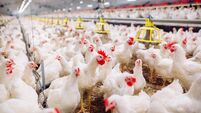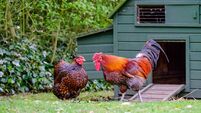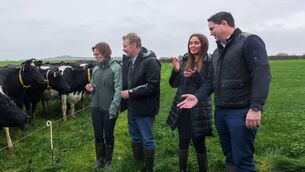EU may well look at Canada's progress on carbon farming

The Soil Sampling and Analysis Programme is aimed at putting soil carbon, soil health and fertility at the centre of our agricultural model. Picture: iStock
Payments for EU farmers who actively sequester carbon on their lands could be in place next year.
Carbon farming is part of the EU’s Climate Target Plan for 2030. A proposal is expected by the end of 2021, which would be followed by stakeholder consultations.
Last April, the Commission published a study on how to set up and implement carbon farming in the EU, which will feed into the launch of an EU carbon farming initiative by the end of this year.
The study reviewed existing schemes for the protection and development of natural carbon sinks and explored how to trigger carbon farming in the EU. It concluded that carbon farming brings benefits such as carbon sequestration and storage, and increased biodiversity and preservation of eco-systems.
The Commission first wants to integrate agricultural non-CO2 greenhouse gas emissions (mostly methane) into the land use, land-use change, and forestry (LULUCF) sector and to create a new regulated sector covering agriculture, forestry, and land use, which would, in turn, provide the basis for carbon farming.
However, it will be a difficult challenge to devise a system of payment for carbon offsetting, given the many question marks over existing worldwide offsetting schemes first introduced more than 20 years ago.
These are widely used by companies to compensate for their emissions and to improve their “green” image.
For example, fossil fuel companies buy carbon offsets associated with trees which would absorb carbon over the coming years, “balancing out” the pollution from production and use of fuel.
Organisations that plant and protect trees, install renewable energy or do other activities that can reduce net emissions, sell a carbon offset for every tonne of carbon saved or removed.
Companies buy these, for example, airlines, some of which allow customers in turn to pay for the offsets, to give them the satisfaction of “carbon neutral” flying.
However, the system is voluntary and unregulated, and there is also the view that offsets give companies what buy them a licence to pollute.
Carbon farming schemes set up by governments may offer a better model for the EU.
European lawmakers will no doubt study the progress of the Canadian federal government’s recently announced $200m programme over three years to help farmers adopt beneficial management practices that store carbon and reduce greenhouse gas emissions through cover cropping, nitrogen management and rotational grazing practices.
Direct payments to Canadian farmers will be provided through delivery partners like producer associations, Indigenous groups, non-governmental organisations and provincial Crown corporations.
Canada’s On-Farm Climate Action Fund will support three target areas.
Cover cropping will earn the farmer a payment per acre to cover costs such as seeds and equipment, for crops like clover and alfalfa planted to cover the soil rather than for harvest.
Payments will also cover the costs of nutrient management plans, equipment modifications for fertiliser application, and soil sampling and analysis.
Thirdly, there will be payments for costs of developing rotational grazing.
Like the EU, Canada aims to be a net-zero emissions economy by 2050 and will invest $4bn up to 2030 in its Natural Climate Solutions Fund.
Here, Agriculture Minister Charlie McConalogue has said his Department has no plans to develop a voluntary carbon market, but this will be kept under review.
“Carbon farming is highlighted in the EU Green Deal under the farm to fork strategy and the European Commission are examining ways of encouraging activities that remove carbon across sectors. The Department does see potential opportunities to attract private finance from voluntary carbon markets and forest owners and organisations can avail and develop these opportunities as long as they don't impact on Ireland's international accounting and reporting requirements.”
“The Department will examine developing proposals by the European Commission on carbon farming to see if existing funding models can be improved.
“The Department currently operates the Woodland Environment Fund which includes a mix of private finance and state aid to part-fund the establishment of these forests, and this model has worked well."
The Woodland Environment Fund allows businesses that partner with Government and private landowners in creating diverse woodland habitats to use this activity for promotion purposes for 15 years. The landowner gets a once-off payment of €1,000/hectare, in addition to normal Native Woodland Scheme payments.
Minister McConalogue has also committed to develop a pilot scheme for on-farm carbon trading, through AgClimatise, the national climate and air roadmap for the agriculture sector.
And the recently introduced National Soil Sampling Programme will be “essential in providing the necessary data to realise the potential of carbon farming in Ireland”, due to its role in the measurement of greenhouse gas emissions from Irish farms.
Meanwhile, an international effort is underway to improve the international carbon offsets market. A progress report is expected at November’s COP26 international climate conference from a task force headed by former Bank of England governor Mark Carney, now UN special envoy on climate action and finance and Bill Winters, chief executive of the Standard Chartered multinational banking and financial services company










